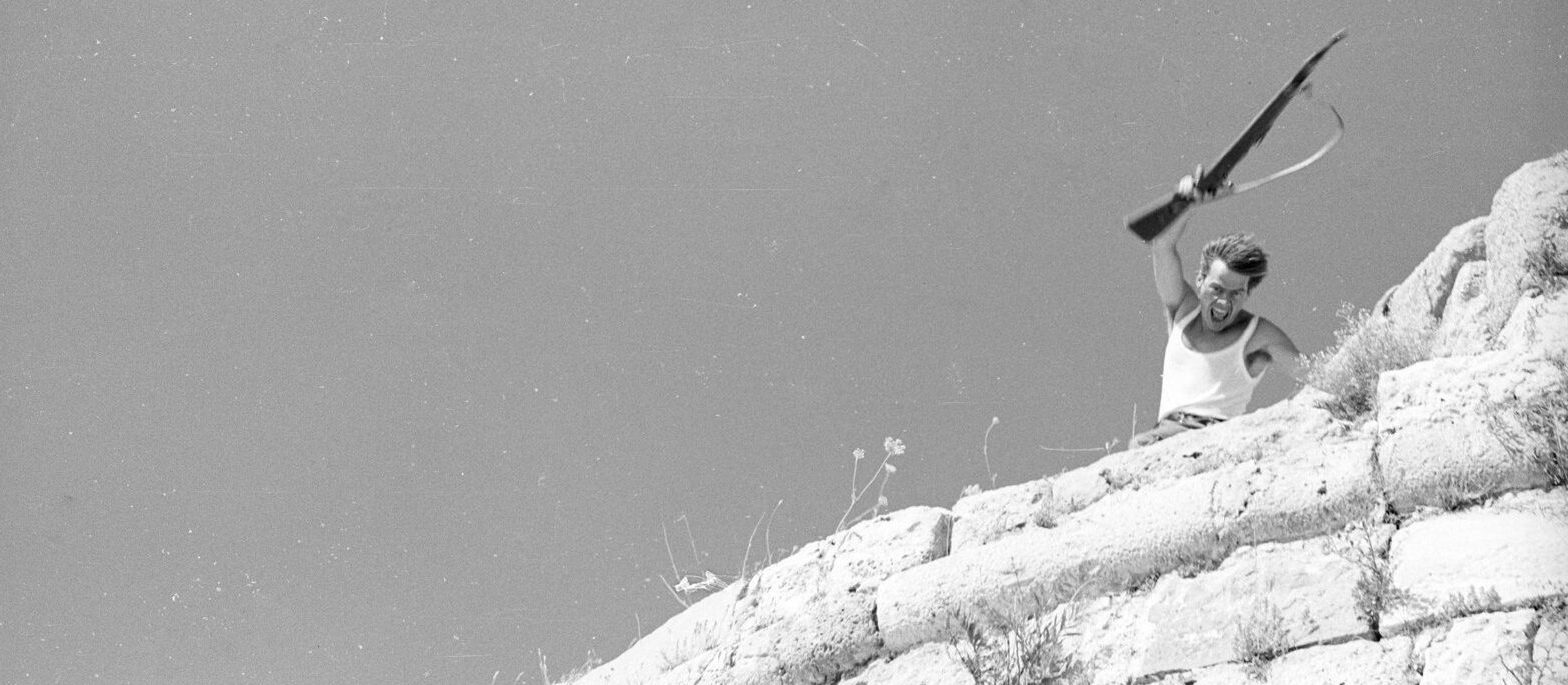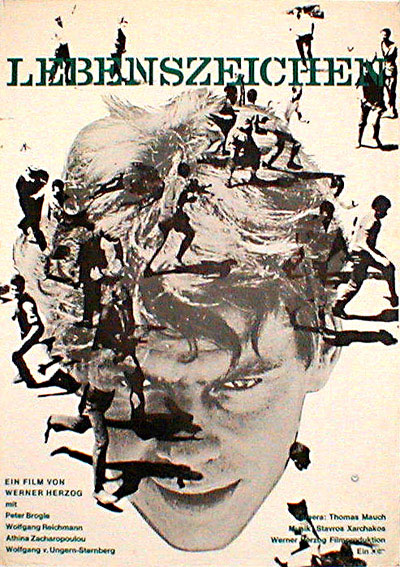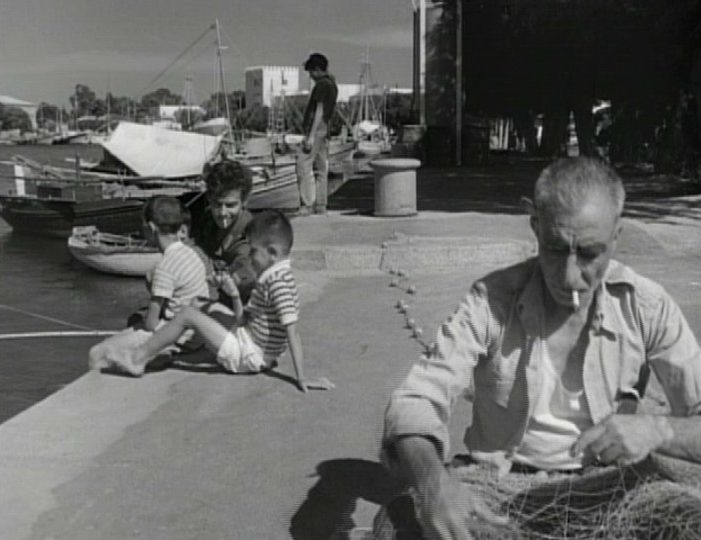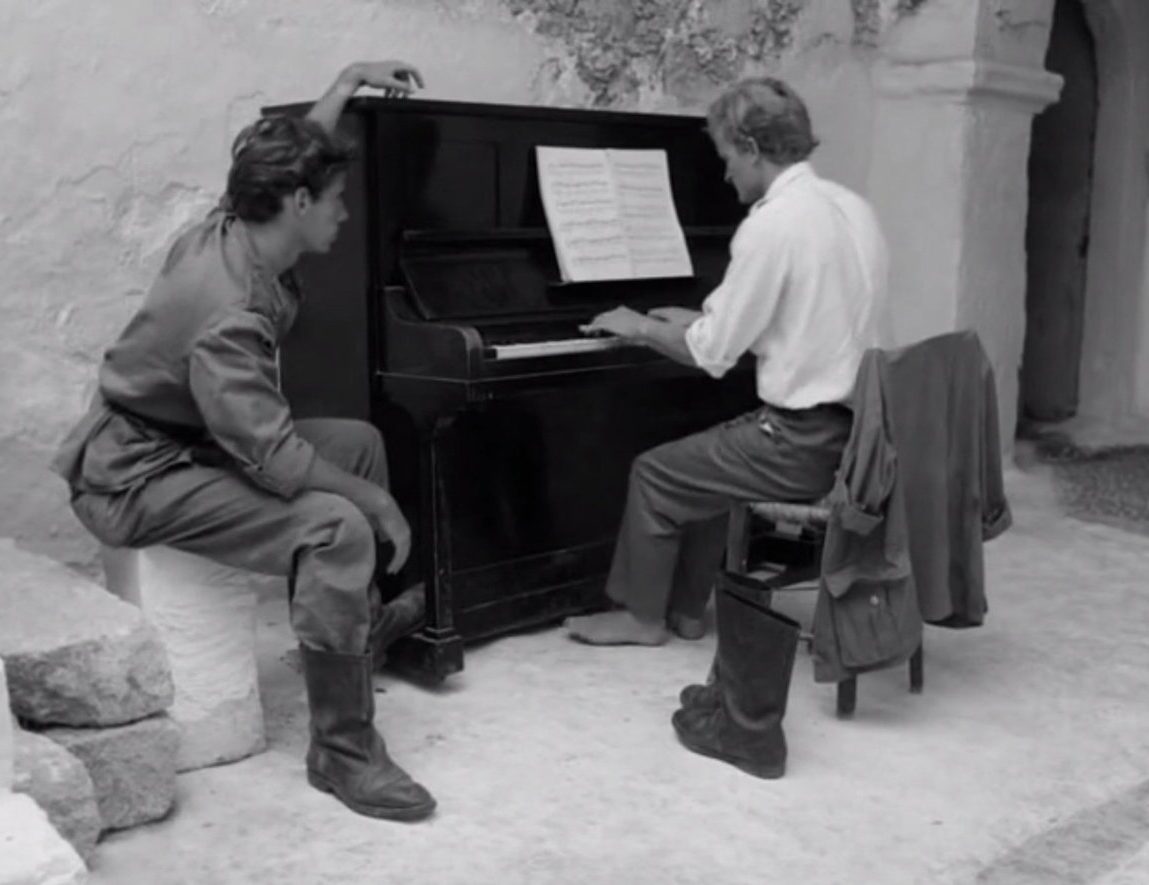

“Now that I can talk, what shall I say?”
Signs of Life is exactly what you’d expect to find if you’re diving deep into the well of Werner Herzog’s vast body of work after experiencing some of his later triumphs. Here, in prototypical form, we find the visionary director confidently depicting a descent into madness set against a distinct exotic backdrop and shot on location with maverick intensity. That’s the template that he’s utilized for many of his features—even some of his documentaries could be described this way.
It is a patient work, modestly ambitious and packed with idiosyncratic detail yet disarmingly simple, that establishes the recurrent themes and tendencies of a wonderfully heterodox filmmaker. Though not without its creaky floorboards and loose seams—but let’s be honest, “polish” would be antithetical to Herzog’s ethos—it showcases the essence of the director’s budding production style and boasts several of those interstitial moments of wonder that come so naturally to him.
Immersed in the locale of the Greek island of Kos and set during WWII, Signs of Life concerns itself with a trio of stir crazy soldiers who are withdrawn from combat when one of them is wounded. Led by the injured Stroszek (Peter Brogle), the soldiers are assigned to guard a crumbling 14th century fortress that houses an abandoned ammo dump far from the action of the war.1 Apart from an isolated, symbolic act of defiance, the townspeople meekly accept the presence of the Germans, rendering their task perfunctory. Along with Stroszek’s new Greek wife Nora (Athina Zacharopoulou), they move into the fortress and while away their days. They spend time painting their lodgings, addressing the cockroach infestation, fishing, hypnotizing chickens, engaging the quirky locals, translating the Greek verses written in stone around their abode, teaching Nora to speak German, and idly exploring the gorgeous island.
In contrast to the restlessness exhibited by Stroszek, and to a lesser extent, Meinhard (Wolfgang Reichmann) and Becker (Wolfgang von Ungern-Sternberg), Herzog presents the island as an impossible idyll. His mystical version of Kos is as important to the film as any character, probably even Stroszek. Much of the runtime is spent patiently exploring magical side trails, presenting us with an industrious society composed of properly proud residents that are content with their lot in life, at peace with the world. The sketch of Kos is done both in broad strokes—shots of the ruminating eldery, dusty roads, docked boats, sleepy cats, swarms of fish, children playing, fresh linens hung out to dry, architectural remnants—and in the memorably specific.

There are two minor characters who appear only briefly that prove noteworthy. The first is a wandering gypsy (Julio Pinheiro) who carries a hefty music box on his back. At first he intrigues the soldiers with card tricks and dancing and a story of separation from his traveling family long ago. He then presents them with a carved wooden owl, its component arms and ears animated by flies trapped inside of it, buzzing around frantically. Mesmerized by the artifact, the soldiers play with it until they discover the source of its movements at which point Meinhard becomes disgusted. But when they look around to berate the gypsy he has already disappeared. The second is a pianist that Stroszek finds tickling the ivories in what appears to be an abandoned building. This unnamed character is none other than Florian Fricke, Herzog’s lifelong collaborator who composed some stunningly beautiful music with Popol Vuh and provided the soundtracks for some of Herzog’s later masterpieces.
At the time Herzog was making Signs of Life, Fricke was not an established musician. While he provides some diegetic music on the piano, the soundtrack of traditional Greek compositions was handled by Stavros Xarhakos. I don’t have the background knowledge to parse it with any clarity, but the energetic mixture of exotic stringed instruments and ruminative passages match Herzog’s aims quite well. Herzog frequently lets his transitions balloon and meander, almost letting the music steer his editing, and this results in some very beautiful, ephemeral moments (note: the linked video is not an individual sequence from the film but a compilation of many smaller clips).

What I find most remarkable about Signs of Life is how competently it matches a sense of realism with the absurd. The largest misstep is an overreliance on blunt narration that tends to distract the viewer but otherwise serves to flesh out Stroszek’s predicament and make it feel legitimate. This anchored reality is enhanced by Herzog shooting everything on location and not cutting any corners. But then the music-heavy excursions, the gypsy king, the chicken hypnosis, etc. push us into a fantastical realm. The film has a delightful coda in which Stroszek, now a madman, launches fireworks from the parapets. But the greatest achievement of Signs of Life occurs earlier, before Stroszek goes mad—in fact, it appears to be the event that triggers him. Eventually, the oppressive heat, confinement, and lack of purpose eat away at him and he is given a circuitous route to patrol to relieve his stress. While making his round with one of the other soldiers, Stroszek stumbles across a large valley peppered with an unfathomable number of crude windmills spinning freely in the breeze. Captured on lower resolution footage, the panning shot of the valley is a truly awe-inspiring moment as Herzog transports us out of the authentic world in which the soldiers exist to a surreal, possibly imagined world that is unconnected to the familiar one.2 Their metallic rumblings quickly push Stroszek to the brink of insanity.
Though I wouldn’t go as far as to say Signs of Life matches Herzog’s subsequent works, it certainly bears many of his hallmarks and should not be considered as some sort of building block toward his later successes. Evident here are his regard for the natural landscape, a skill for combining music and image, and his immersive production style. It’s a confident, inspiring debut from an ambitious aspirant who would go on to become one the medium’s most respected practitioners, and an early testament to the auteur’s guerilla style of filmmaking.
1. Werner Herzog’s grandfather, Rudolf Herzog, lived and worked on the site for several years in the early 1900s.
2. The field of windmills is real, as in, Herzog saw it and felt a sense of awe that inspired him to create this specific moment in the film.